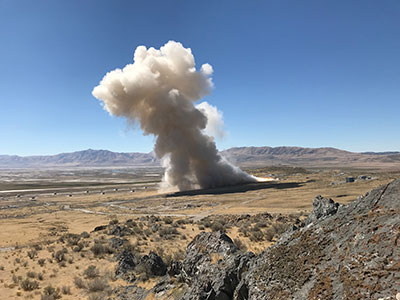 |
| Forum: | Commercial Space - Military Space |
| Topic: | Northrop Grumman GEM 63 for ULA Atlas V |
|
| Want to register?
|
If you have previously registered, but forgotten your password, click here.
Northrop Grumman began developing the motor just three years ago, reaching this static test milestone in rapid time for such a complex drop-in solution to an existing launch vehicle. The team developed the innovative design that tailors motor performance to meet ULA design objectives under a cooperative development program.
"Northrop Grumman has been supplying solid propulsion motors for a variety of launch vehicles since 1964," said Scott Lehr, president, flight systems, Northrop Grumman. "As ULA's largest legacy supplier of solid propulsion, we're pleased that our most recent product has reached this important milestone. The successful completion of this test enables full production to begin."
The GEM 63 motor will be used as a direct replacement of the previous strap-on boosters on ULA's Atlas V rocket beginning in July 2019 with the Space Test Program (STP)-3 mission that will use five boosters. Additional missions will follow, each of which may include up to five solid rocket motors.
The relationship with ULA began in 1964 when Thiokol (a Northrop Grumman predecessor company), in Huntsville, Alabama, provided three CASTOR® I strap-on rocket motors for the Delta D rocket. Several years later, CASTOR IIs flew on the Delta E rocket, and subsequently CASTOR IVs helped launch higher-performing Delta rockets. Also, CASTOR IVAs flew on the Atlas IIAS vehicle from 1993 to 2004, when 120 solid rocket boosters flew on 30 successful Atlas IIAS launches. Prior to the current Delta IV heavy launch vehicle, Northrop Grumman provided the large three-segmented Solid Rocket Motor Upgrade (SRMU) strap-on booster for the Titan IVB rocket. Thirty four SRMUs successfully flew on Titan IV from 1997 to 2005.  Northrop Grumman, then Hercules, began developing the GEM family of strap-on motors in the late 1980s with the GEM 40, 1,003 of which have subsequently flown on 132 successful Delta II launches. The company also developed the GEM 46, 54 of which flew on six successful Delta II-Heavy launches. Northrop Grumman later developed the GEM 60, and to date 62 of these motors have flown on 25 successful Delta IV launches. The company's family of GEM 63 rocket motors builds on this extensive flight history.
Northrop Grumman is also developing a GEM 63XL motor using internal funding for use on ULA's Vulcan Centaur rocket, which will fly with up to six GEM 63XLs per flight. The first GEM 63XL case, which is the longest non-segmented, monolithic case ever manufactured, has already been wound at a new facility in Clearfield, Utah.
Both versions of the GEM 63 family use common materials and processes to maintain a high-reliability, low-cost product. The next GEM 63 motor test, scheduled for November, will satisfy additional requirements for certification by the U.S. Air Force. |


